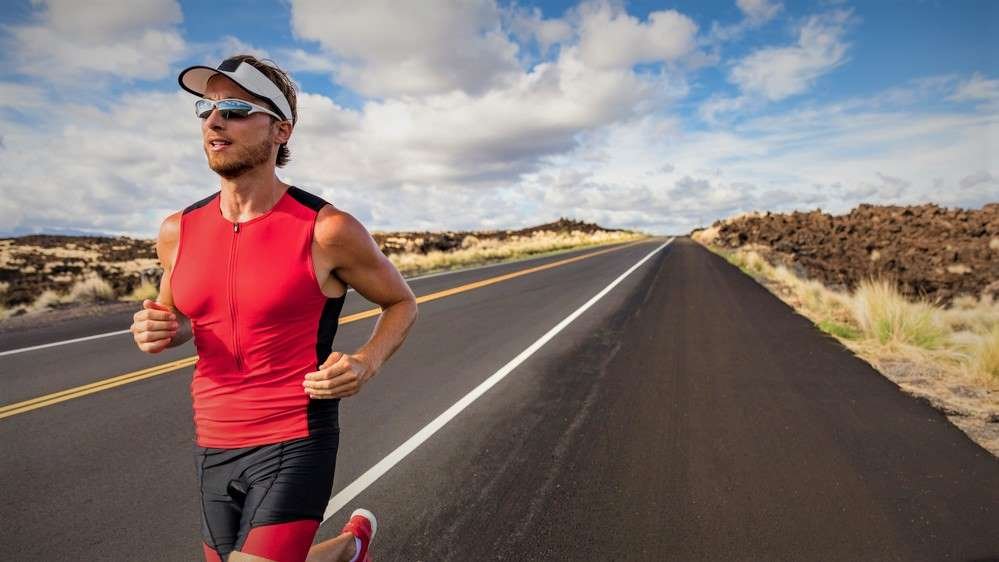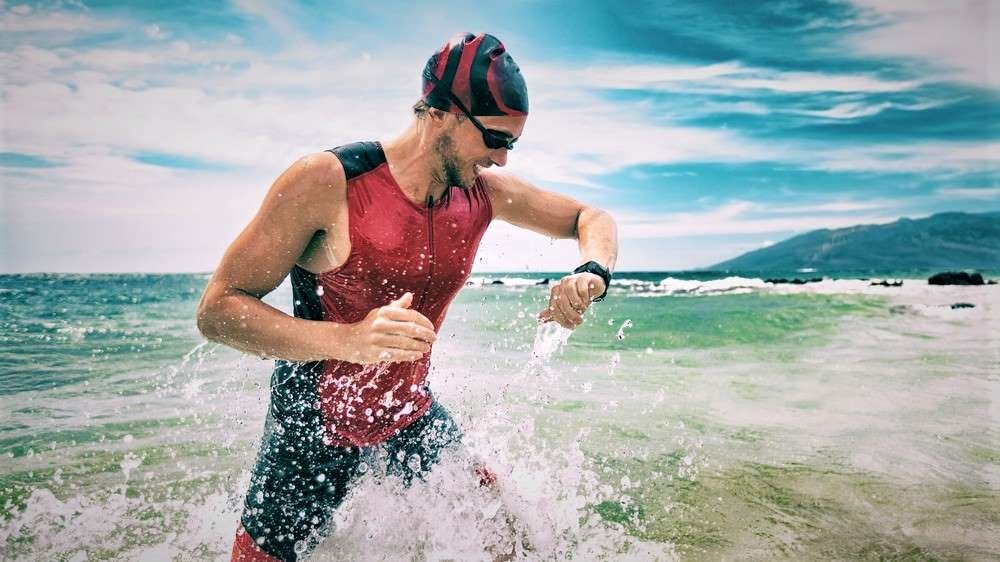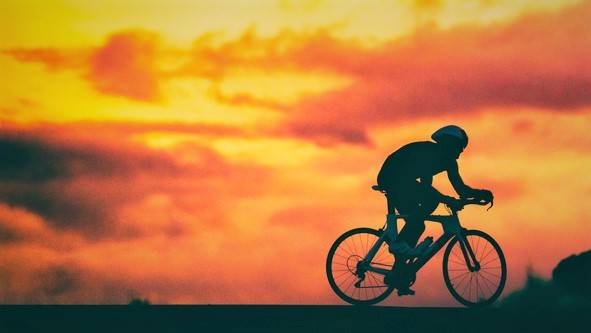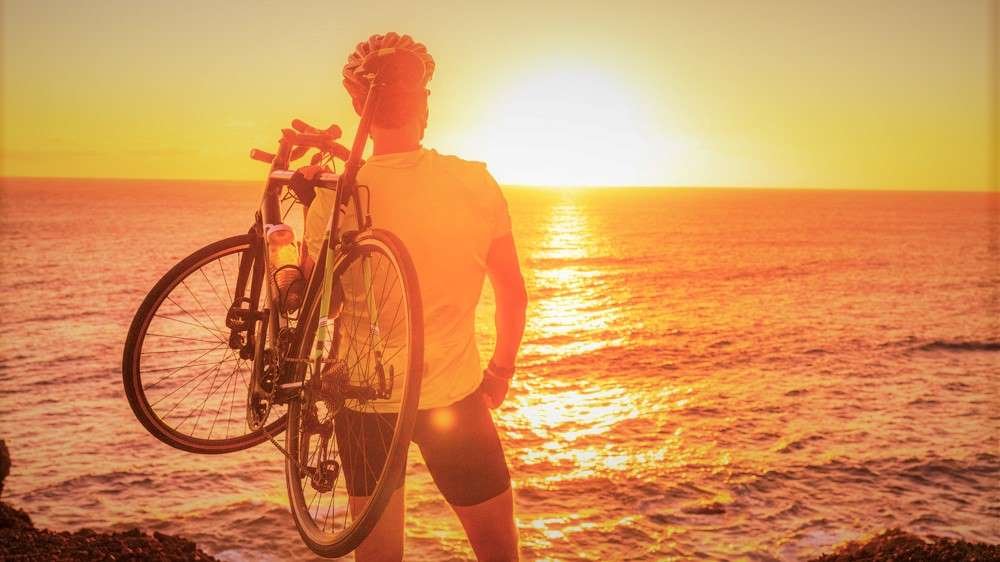The Hawaii Ironman World Championship Race Overview
The Hawaii Ironman is the ultimate challenge for any athlete. It’s a grueling test of physical and mental endurance, pushing athletes to their limits. Every year, thousands of people attempt this incredible contest to push themselves beyond what they thought was possible. Competing in the Hawaii Ironman can be life-changing for those who complete it.
This article takes you through the competitive Hawaii Ironman racing world – from understanding the rules and regulations to exploring the training regimens required for success. Readers will learn what it means to put your body and mind through such a demanding endeavor and why so many athletes are willing to take on this unprecedented challenge.
Whether you’re an experienced competitor or just starting, this guide provides all the information needed to understand how challenging yet rewarding it is to compete in one of the sport’s most grueling events: The Hawaii Ironman.
Overview
Competing in the Hawaii Ironman is like trying to summit Mount Everest: an extreme test of endurance, strength, and mental fortitude. The iconic triathlon competition occurs annually on the Big Island of Hawaii and is considered the pinnacle of long-distance racing.
A single event consists of a 2.4-mile swim, 112-mile bike ride, and 26.2-mile run – all back-to-back without rest – making up the grueling ironman distance race.
The world’s best athletes flock to Kailua-Kona yearly to compete in this grand spectacle, the Ironman World Championship. Gaining entry into this exclusive club requires months (or even years) of training and dedication; those who cross that finish line can be proud they conquered one of life’s ultimate challenges.
Qualifying For The Event

To qualify for the Hawaii Ironman event requires a significant amount of effort and commitment. The qualifying criteria are stringent, with athletes needing to meet specific standards to be eligible. Competitors must compete in qualifying events before registering for the race. These races may include Ironman 70.3 World Championship, Ironman Asia-Pacific Championship, Ironman European Championship, and other designated full-distance triathlons.
According to ironman.com, there are eight ways to qualify for the Ironman championship in Hawaii for 2023:
- Standard Qualification. Slots are allocated for every ironman race but depend on the size of the age group. There are 47 full-distance IRONMAN races in 2023 to compete in.
- Qualify at an IRONMAN 70.3 Event: GWM Western Australia, Hawaii, Luxembourg, and Lubbock offer slots.
- Extra Women’s Slots: There are 17 designated events with extra slots for women.
- IRONMAN Legacy Program: Complete 12 full-distance, IRONMAN-branded triathlons to qualify.
- IRONMAN Foundation Kona Auction: The minimum opening bid on eBay is $25,000.
- Physically Challenged Open or Exhibition Division Drawing: Five physically challenged athletes will be drawn for entry.
- IRONMAN Executive Challenge: 25 slots available through XC qualifying events.
- Hawaii Residency Slots: 26 slots are offered at IRONMAN 70.3 Hawaii. (read more at ironman.com)
Meeting these qualifying standards is no easy feat either – athletes need to achieve a specific time at one of the events mentioned above to register for the Hawaiian Ironman competition. Taking part in this prestigious sporting event isn’t something you can achieve without motivation, determination, hard work, and dedication!
Training And Preparation
Competing in the Hawaii Ironman is the ultimate challenge, and proper training and preparation are crucial to success. Triathlon training involves mastering different swimming, biking, and running elements while maintaining endurance levels for a long-distance race. Pre-race nutrition also plays a vital role in helping athletes maximize their performance on race day.
Creating meal plans that include nutrient-dense foods like lean proteins, healthy fats, complex carbohydrates, fruits, and vegetables is essential. Hydration strategies should also be employed throughout the process, as dehydration can lead to early fatigue during competition.
When it comes to race day strategy, having a plan is essential. Set realistic goals to understand pacing approaches for each component of the triathlon event. Long-distance running requires extreme mental focus as well as physical strength. Properly pacing yourself helps manage energy levels over time, so you don’t burn out too quickly before crossing the finish line. In short: Proper planning and execution of triathlon training and good pre-race nutrition will set athletes up for success when competing in the Hawaii Ironman event.
Race Day Checklist
As race day approaches, the excitement of anticipation is palpable. Your hard work and dedication have led to this ultimate test of strength: the Hawaii Ironman.
But before you can make it to the finish line, you must attend to a few essential things first. A well-prepared athlete will have a comprehensive race-day checklist to ensure they arrive at their peak performance on race day.
Check all the equipment off the list – a wetsuit, cycling gear, running shoes, etc. You’ll also need to plan what type of pre-race meal is best for you; something light yet full of energy, such as oatmeal or yogurt with some fruit, might do the trick.
From here, create an effective race strategy so you know how long each leg will take and where you might want to push yourself harder during certain portions of the course.
In addition to physical preparation, don’t forget about mental preparedness, either! Take time before the event to visualize success and focus on having fun while competing instead of being overwhelmed by the challenge ahead.
Swimming Leg Of The Race

Swimming is the first leg of the Hawaii Ironman triathlon, and it’s a crucial part of any successful race. It requires endurance, determination, and skill to reach the open-water swim distance of 2.4 miles. Swimming in open water is an intimidating task for many triathletes. Still, with proper preparation and training, they can conquer their fears and complete one of the most significant sporting challenges.
It is still unknown what the route for 2023 will be, but here is the swimming route for the 2022 race.
The race’s swimming portion was a 2.4-mile course starting from Kailua Pier, with buoys on the right as you swim clockwise. The race organized 13 waves of participants to ensure every participant had a good start. It started at 7 am on two different days. And the water temperature was reported to be between 79.5 and 80.1 degrees Fahrenheit during the competition.
To prepare for this daunting challenge, triathletes should:
- Focus on developing strong stroke mechanics:
- Practice drills regularly, as well as focus on building strength throughout all four strokes
- Increase speed by incorporating interval workouts into each session
- Develop efficient breathing techniques:
- Learn how to breathe bilaterally both above and below water efficiently
- Incorporate breath control exercises into regular sessions, such as hypoxic sets or snorkel work
- Maintain mental toughness:
- Train yourself to control anxiety levels during competition
- Cultivate positive self-talk strategies to help remain focused when feeling fatigued
Triathletes who take the time to train correctly will reap the rewards on race day; they’ll have improved performance due to increased efficiency in stroke mechanics and oxygen intake, as well as greater confidence which will allow them to push through fatigue more quickly than ever before. With these tools under their belts, they’ll be better prepared.
Cycling Leg Of The Race

Having conquered the swimming leg of the race, athletes now face the daunting task of cycling. The Ironman race biking portion takes place on a course in Hawaii. We still don’t know the exact route for this year’s race, but last year’s 2022 Hawaii Ironman cycling leg was a challenge for even the most experienced athletes. With 112.3 miles of rolling terrain, the course tested the athlete’s endurance and stamina with its maximum grade of 6.3%.
It started along Queen Ka’ahumanu Highway, and there were 9 aid stations strategically placed throughout the out-and-back course. The competition was brutal, but if you prepare ahead of time, this year’s race could be an unforgettable experience!
The bike segment is one of the most physically demanding legs of the competition, requiring focus and energy that can be hard to summon after hours spent battling waves and currents in open water. Racers often find themselves pushing through fatigue while trying to keep pace with other competitors during this long stretch along Queen Ka’ahumanu Highway, giving everything they have left for a chance at victory. With more than 2,000 feet of elevation gain and loss across 35 miles of rolling hills, cyclists need an extra boost if they are going to stand atop the podium when all is said and done.
Running Leg Of The Race
It is a widely accepted theory that the running leg of an Ironman race has the highest potential to make or break any competitor’s chances of success. On the race-day morning, runners must prepare for a marathon distance run; 26.2 miles of pavement await them at the end of their grueling task. The question remains: Is it possible to be successful in this ultimate challenge?
The Hawaii Ironman running leg of last year was a beast. The 26.2-mile marathon started at Kailua Pier and took runners on an out-and-back course to Pahoehoe Beach Park. On top of that, the total elevation gain for the race was an impressive 1,144 ft. There were 18 aid stations set up along the way.
If you’re considering taking on this challenge, get ready – it’s not for the faint-hearted. The strong winds, steep hills, and long stretches can push even the most formidable athletes over their limits. But with preparation and determination, you can make it through the grueling event and cross that finish line.
While some competitors arrive at the starting line feeling confident they can finish within the allotted time limit, others feel overwhelmed by such a daunting task. Regardless of how one feels before beginning the running leg, specific strategies can help competitors succeed during this portion of the event.
Having adequate fuel levels throughout the course is essential to completing all three legs successfully. Access to hydration stations will keep athletes replenished and energized until they reach the finish line. Many athletes use positive self-talk when faced with challenging moments during the run and believe they can do anything if they put their minds to it—those who take on this ultimate challenge need enough training and mental fortitude.
Aftermath And Recovery

Having crossed the finish line of the Hawaii Ironman, competitors are elated by their achievement yet exhausted from such a grueling event. Recovering from an ironman is no small feat; triathletes must restore their nutrition and heal physically and mentally rejuvenate.
Nutrition restoration should begin immediately after crossing the finish line, as athletes can become dehydrated and depleted of electrolytes due to competing in extreme heat for so long. Eating protein and carbohydrates will help replenish energy levels, while drinking plenty of fluids helps rehydrate the body.
Additionally, consuming foods that contain sodium or potassium can assist in restoring any lost electrolytes.
The recovery process also involves physical healing, including stretching, massage therapy, and foam rolling to reduce soreness and muscle tightness. This step is essential as it allows muscles to repair themselves before returning to intense training.
Furthermore, many athletes find mental rejuvenation helpful through yoga or meditation.
Taking time off after completing an Ironman is encouraged and gives one’s mind and body a chance to rest before tackling another challenging race.
With proper nutrition restoration, physical healing, and mental rejuvenation, post-ironman recovery can prove successful for all participants who have taken on this ultimate challenge.
Frequently Asked Questions
What Type Of Nutrition Should I Consume During The Ironman?

Ironman competitions may seem daunting, but you can finish with the proper preparation and nutrition plan!
Getting your body ready for an Ironman requires months of training. But it’s not only about physical conditioning – what you put in your body is just as important. If you want to perform at your best during the race, you need to fuel up on a balanced mix of carbohydrates, fats, proteins, vitamins, and minerals.
Reach for easy-to-digest foods like oatmeal or bananas with peanut butter to give you plenty of energy without weighing you down. And don’t forget to replenish electrolytes throughout the competition.
It’s also essential to get your timing right when eating. Have a pre-race meal plan so that you know which nutrients you’re getting before the event starts. During the race, consume enough to keep your energy levels up. And afterward, don’t forget to refuel with recovery meals after each stage.
How Much Does It Cost To Compete In The Hawaii Ironman?
Race fees for the Hawaii Ironman are not the same every year. This year, 2023, the entry costs have increased to USD 1,400 plus fees (Hawaii Tax and Active fee), which brings the total up to nearly $1,600 or £1,400.
Are There Any Age Restrictions For The Ironman?
If you’re thinking of entering the Hawaii Ironman, there’s one key thing to keep in mind: age.
The minimum age is 18 years old, and the maximum is 80. Anyone above that will need special permission.
How Much Time Should I Plan To Spend Training For The Ironman?

Preparing for an Ironman is no small feat and requires consistent effort. To get ready, you should already be a top-level athlete and dedicate at least 3-6 months (but ideally a year or more) of training that covers swimming, biking, running, weightlifting, and stretching.
Maintaining a regular workout schedule with rest days in between will help you keep track of your progress – look out for performance metrics like heart rate, speed, distance, and intensity levels.
If you notice any weak points, make the necessary adjustments or supplement your routine with additional elements.
Ultimately, there’s no magic number when it comes to knowing how much time you should give yourself for preparation; understanding the complexities of proper Ironman training duration is critical.
What Type Of Safety Measures Are In Place During The Race?

Competing in an Ironman is no easy feat; you should take all safety protocols seriously. Video monitoring, on-site personnel, medical staff along the race route, emergency plans such as helicopter evacuation, and a risk management team with contingency plans all come into play. Additionally, strict security regulations, reliable medical staff, and comprehensive emergency plans are put in place to keep everyone safe. All these measures contribute to a secure environment where athletes can compete without worry.
Conclusion
The Hawaii Ironman is a challenging and rewarding event that tests an athlete’s physical, mental, and emotional limits. It requires extensive preparation with the proper nutrition and training regimen to ensure safety and financial planning to cover the associated costs. With determination and endurance, participants can find it a life-changing experience. You can read more about Hawaii in our travel guide.

